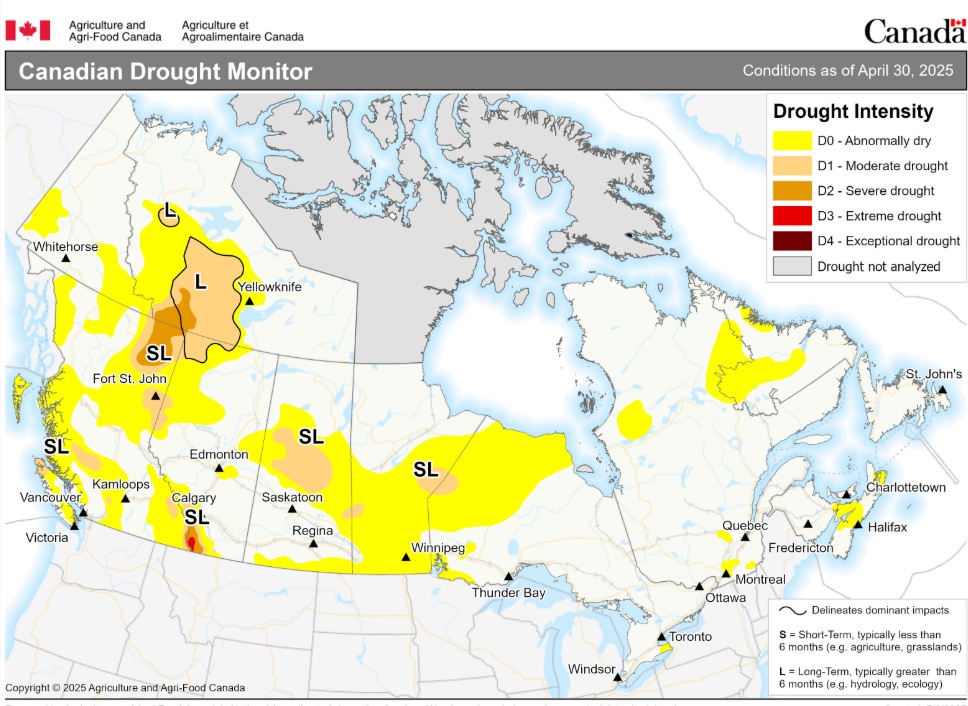April brought highly variable precipitation across Western Canada, but the bottom line was a modest increase in abnormal dryness and drought compared to March.
The latest monthly update of the Canadian drought monitor showed 41% of Prairie agricultural lands impacted by abnormal dryness or some form of drought as of the end of last month. That’s up from 32% In March and 23% at the end of February.
According to the monitor, a broad area from east-central Alberta through central Saskatchewan and into southern and central Manitoba saw well below-normal April precipitation, with some areas receiving less than 40% of normal. Alberta's Peace Region was shortchanged as well, receiving under 60% of normal precipitation.
On the other hand, much of the rest of the Prairies received between 85% and over 200% of normal precipitation, with the highest precipitation amounts falling across northern and southeastern Alberta, southern Saskatchewan, and southwestern Manitoba. Much of this came in the form of a late-month snowstorm that brought snowfall amounts upwards of 30cm across southeastern Saskatchewan and southwestern Manitoba.
Alberta saw improvements to drought in west-central areas in April, but worsening drought in the southwest. A new pocket of extreme drought developed along the southern Foothills due to long-term precipitation deficits, well below normal snowpack reported over the winter, low surface water levels and dry soils, the monitor said.
Drought conditions in April expanded across central Saskatchewan but were alleviated along the southeastern corner of the province. Both abnormally dry and moderate drought areas expanded across central Saskatchewan as these areas received less than 40% of their normal monthly precipitation in addition to growing precipitation deficits in the longer-term.
In contrast, the remaining parts of southern Saskatchewan saw little change in drought conditions in April as snowmelt and a late-month snowstorm helped replenish soil moisture and improve water supplies.
South and central Manitoba received below-normal precipitation in April, with the exception of the southwestern corner which received above-normal monthly precipitation. Short-term precipitation deficits, low stream flows and increased fire risk alongside reports of little runoff from snow melt and low soil moisture led to the expansion of abnormally dry conditions across much of south and central Manitoba.
In contrast, southwestern Manitoba saw a reduction in abnormally dry and moderate drought conditions as moisture from a snowstorm in late April brought in lots of wet, heavy snow that was quickly absorbed in the soil with minimal runoff.
